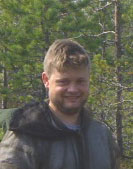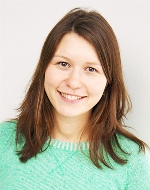ATS 2014 – Reports are online!
Investing in young professionals working for Protected Areas
Every year, the Alfred Toepfer Natural Heritage Scholarships (ATS) and EUROPARC support the work of young conservationist in protected areas across Europe. The call is open to all young professionals working in topics related to Protected Areas in Europe. Conditions to apply:
- candidates must be under 35
- have a European nationality
- be employed by a Protected Area or nature conservation organisation
Check this page to access all the information about the current call!
We are proud to promote the study tour reports made by the 3 scholars awarded in 2014:
–Restoration of peatlands drained for forestry, by Joshua Ratcliffe (UK)
Peatlands are the largest and most space-efficient form of terrestrial carbon storage. Peatland restoration is now underway across Europe, but important questions about the long-term effectiveness and the most economic forms of restoration still need to be answered. In the autumn of 2015 I secured funding to visit peatland restoration projects in Finland. While there I visited Metsähallitus, one of the pioneering organisations involved with the restoration of afforested peatlands. I also visited the “peatlanders” at the University of Helsinki, who have produced a herculean portion of the research on forested peatlands in recent years. This was done with the aim of gathering information on peatland restoration which may be of relevance to projects across Europe, particularly those in the north of Scotland. Several messages came up time and time again throughout my visit on importance of hydrology, on uncertainties about the effect of restoration on the carbon balance of bogs or on what areas are the most valuable to be restored.
– Linking policy and practice: The EU Biodiversity Strategy in management of the transboundary Alpine Protected Areas, by Natalya Yakusheva (Sweden)
The study visit to the transboundary protected areas, Prealpi Giulie Natural Park in Italy and the Triglav National Park in Slovenia aimed at exploring links between political objectives (EU biodiversity strategy) and day-to-day implementation and management in these protected areas. The visits to the two parks demonstrated that day-to-day practices in these institutions comply with the general European approach, especially, in regards to public engagement and searching the way to balance between biodiversity conservation and social welfare tasks.
– On controlling invasive species: how to tackle conservation, ethics and communication to the general public? by Milene Matos (Portugal)
Alien invasive species are a worldwide leading cause of biodiversity decline, ranking second only to habitat loss. The seriousness of this issue led the European Commission to entitle a whole target on it, within the EU Biodiversity Strategy. The negative consequences of invasive species extend beyond environment to ecosystem services, public health, economy, landscape aesthetics, etc., representing a main concern and threat to all aspects of sustainability. Once established, invasive species are extremely difficult and costly to control and eradicate, and their ecological effects are often irreversible. Thus, producing effective invasive species management plans is a central issue in conservation, and increasing awareness and understanding of the risks and issues involved in dealing with invasive alien species is an overarching matter in conservation communication. When it comes to charismatic species, ethical questions also arise, and tackling conservation through their control is a very complex issue. This study visit took place in Parque Regional del Sureste, Spain, where a raccoon control program is being carried out. The goal was to learn how communication in such a delicate topic is being handled. Also, surveys were distributed in Spain and Portugal in order to assess the public perception and knowledge on invasive species.
All reports from previous years can also be downloaded in the library, please follow this link.


